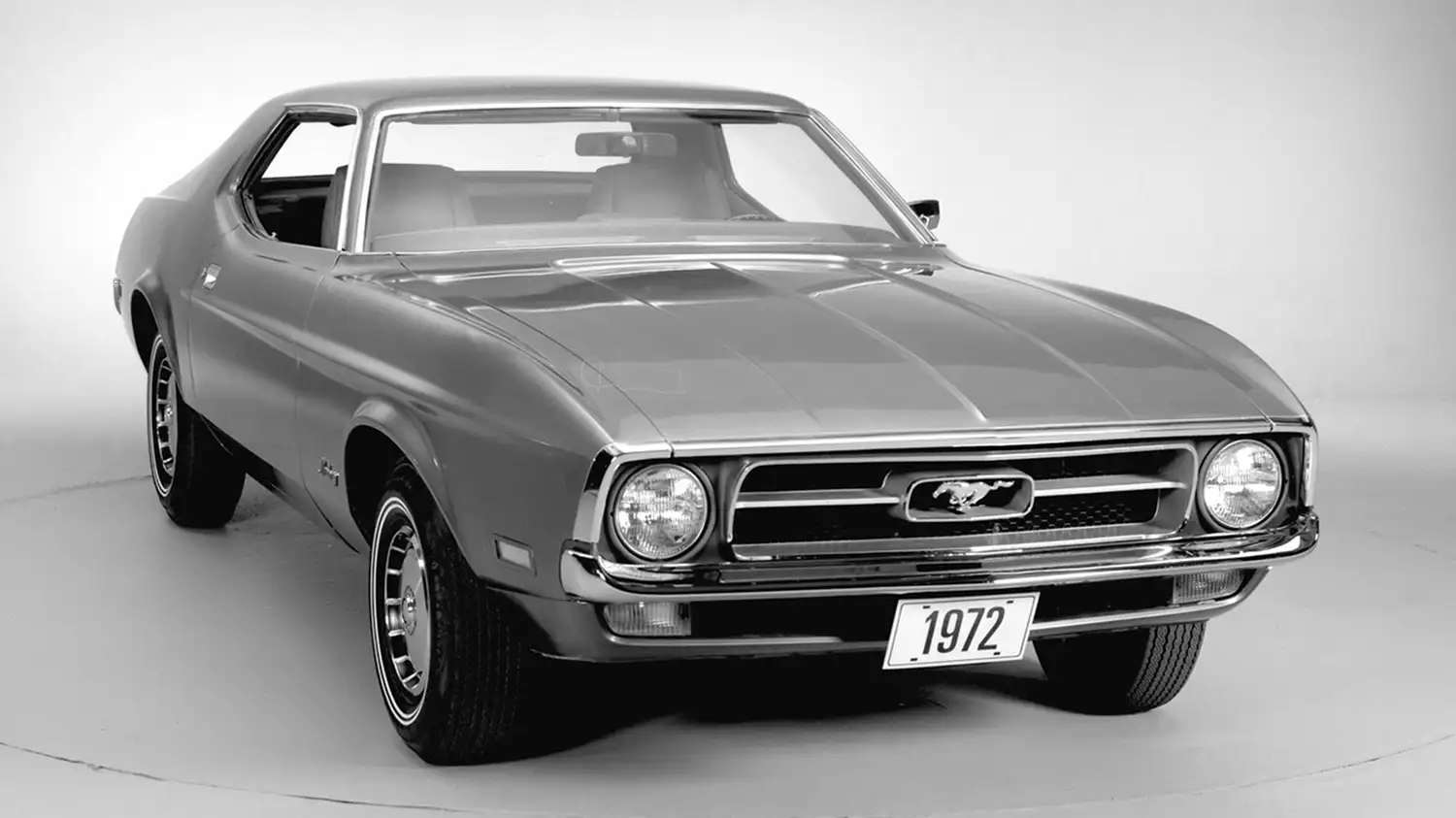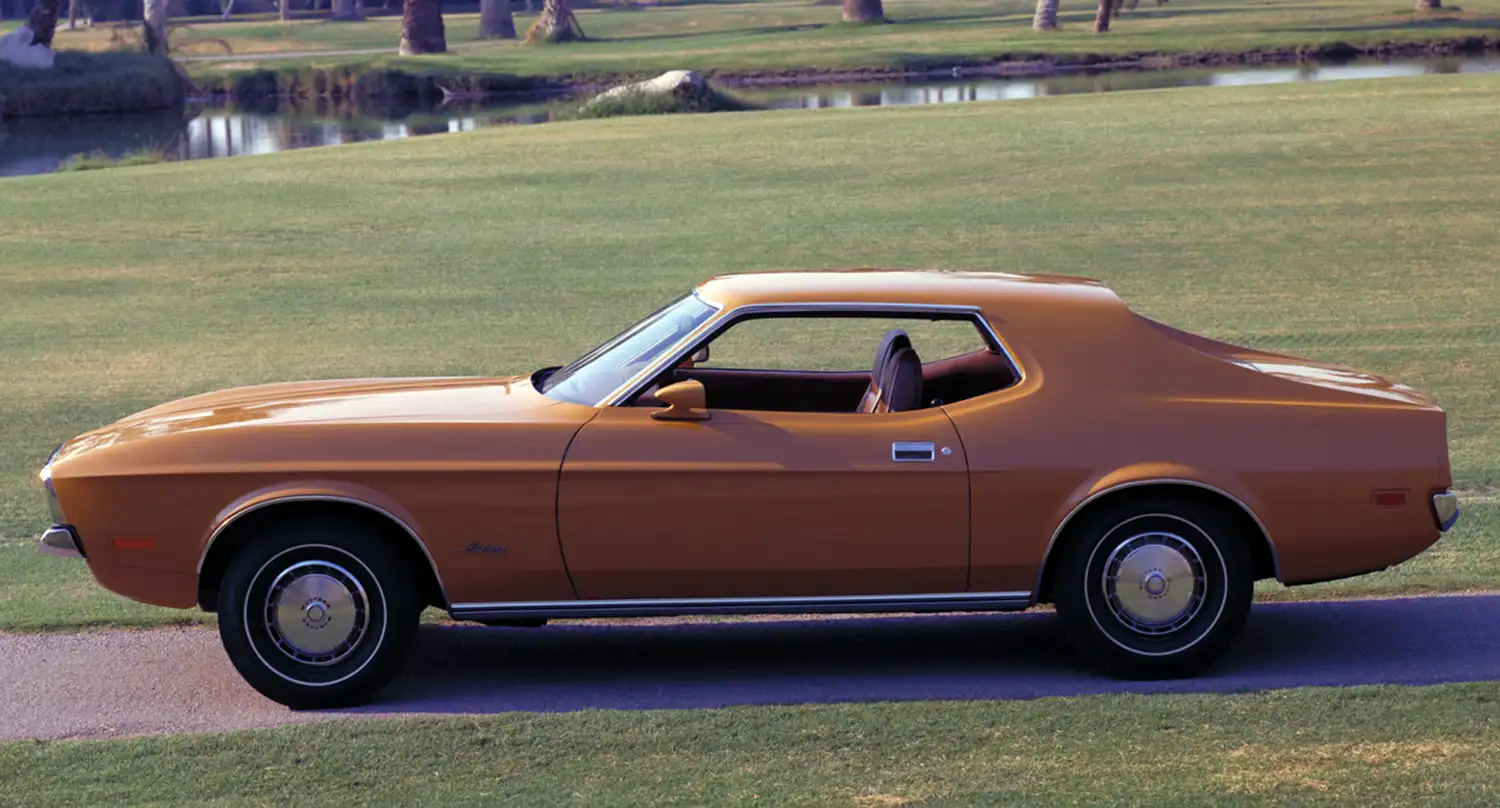
The 1972 Ford Mustang hardtop stands as a significant marker in the history of the legendary pony car. Part of the final iteration of the first-generation Mustang, the ’71-’73 models were the largest and most luxurious of the line, a departure from the smaller, more compact original. The 1972 hardtop, in particular, offered a compelling blend of classic muscle car aesthetics and a more refined, comfortable driving experience, appealing to a broader audience.
Design: The “Big Beast” of the Mustang Lineup
The styling of the 1971-1973 Mustangs, including the 1972 hardtop, was a bold statement. The car was eight inches longer and six inches wider than the 1965 model, giving it a more imposing presence. Its long hood and short deck design, a Mustang hallmark, were exaggerated, creating a sleek, aggressive profile. The 1972 model year saw minimal changes from the previous year, with the most notable being a slightly smaller, script-style “Mustang” badge on the rear deck lid. The hardtop body style was distinguished by its sleek, flat roofline, which contrasted with the fastback “SportsRoof” and convertible models.
Performance and Powertrain
Under the hood, the 1972 Mustang hardtop offered a range of engine options, although the era of high-horsepower big-block engines was drawing to a close due to tightening emissions regulations. The standard engine was the 250 cubic-inch inline-six. Optional V8 engines were where the true performance lay, including the 302 and 351 cubic-inch options. The top-of-the-line V8 for 1972 was the 351 HO, a high-output engine that delivered a formidable 275 horsepower. This engine was a testament to Ford’s efforts to maintain performance despite a changing automotive landscape.
The Grandé and Mach 1 Packages
Two distinct packages were available for the hardtop body style, each catering to a different type of driver:
- Mustang Grande: This was the luxury-oriented hardtop. It came standard with a vinyl top, unique bodyside stripes, and distinctive wheel covers. The interior was upgraded with richer materials, including “Lambeth cloth” and vinyl upholstery. Additional sound-deadening insulation and a softer suspension setup made the Grande a comfortable and quiet cruiser, a stark contrast to the typical muscle car image.
- Mustang Mach 1: While the Mach 1 is most famously associated with the SportsRoof fastback, a hardtop version was also available. This performance-oriented package featured a competition suspension, a honeycomb black grille with sport lamps, a color-keyed front spoiler/bumper, and aggressive lower body paint. The Mach 1 was a true “sheep-in-wolf’s-clothing” package for the hardtop, giving it the look and feel of a performance car without the full fastback body.
A Lasting Legacy
The 1972 Ford Mustang hardtop, along with its ’71 and ’73 siblings, marked the end of an era for the original pony car. It was a bridge between the raw, high-horsepower muscle cars of the 1960s and the more fuel-efficient, smaller-scale Mustang II that would follow. Today, the 1972 Mustang hardtop is a sought-after classic, celebrated for its unique styling, comfortable ride, and the diverse range of options that allowed it to be either a luxurious cruiser or a spirited performer.
Disclaimer: Vehicle specifications and information are based on historical data and may vary depending on the specific model, trim, and modifications.
Source: Ford Heritage Vault
